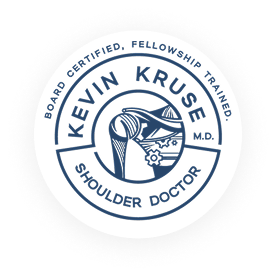How to Achieve the Fastest Recovery from Shoulder Surgery
Recovering from shoulder surgery can feel like a marathon, not a sprint. But what if you could optimize every step of the journey and speed up the healing process—without cutting corners or compromising results?
At my practice, I’ve helped thousands of patients regain mobility, reduce pain, and return to their lives faster than they imagined possible. Whether you’re preparing for surgery or already in the thick of recovery, this guide outlines how to recover smart, not just fast.
Let’s dive in.
Understand This First: Recovery Isn’t Just Physical
Most patients focus solely on physical healing—but recovery actually starts with mindset, preparation, and planning. That’s why the fastest recoveries tend to happen in patients who:
- Follow pre-op instructions carefully
- Commit to rehab and movement protocols
- Ask questions and stay involved in their care
- Stay optimistic, focused, and patient
There are no magic tricks. But there are clear, research-backed strategies that can significantly accelerate your shoulder recovery timeline.
1. Prepare Before Surgery (Prehab Is Real!)
Before you even head into the operating room, your recovery journey has already begun. This is known as prehabilitation.
Here’s what it includes:
- Strengthen supporting muscles: Light exercises can help stabilize your shoulder and prepare surrounding muscles.
- Address posture: Poor alignment affects healing.
- Boost general health: Quit smoking, manage blood sugar, and improve your sleep quality.
- Understand your plan: Know what to expect post-op—medications, pain management, and rehab phases.
Patients who “prehab” tend to:
- Experience less pain
- Have better post-op mobility
- Reduce complications
2. Choose the Right Surgical Approach
Recovery speed also depends heavily on the surgical technique used. At my clinic, we often use minimally invasive arthroscopic methods, which result in:
- Smaller incisions
- Less tissue damage
- Reduced pain and swelling
- Faster healing
In some cases, we may also consider no-sling protocols (as described in another blog), allowing earlier movement and even quicker return to function—when medically appropriate.
3. Follow Post-Op Instructions Exactly
This might sound obvious, but adherence to post-op instructions is one of the top predictors of a smooth and speedy recovery.
That includes:
- Taking medications as prescribed
- Sleeping in a proper position (often at a slight incline)
- Protecting the surgical site from sudden movements
- Monitoring for signs of infection
If your surgeon says “wear the sling for 3 weeks,” don’t cut corners. If they say “start pendulum exercises on day 3,” don’t delay. The right actions at the right time make all the difference.
4. Start Physical Therapy Early (and Stay Consistent)
Physical therapy isn’t optional. It’s essential.
Rehab exercises help:
- Prevent stiffness
- Rebuild strength
- Improve range of motion
- Reduce pain through better circulation and neuromuscular control
In my protocol, patients often begin gentle motion within days of surgery—under the close supervision of a skilled therapist. The faster you get moving (safely), the less likely you are to develop complications like frozen shoulder or chronic weakness.
Pro Tip: Don’t Skip At-Home Exercises
The fastest recoveries happen when patients show up to PT sessions and do their home exercises. It’s a team effort.
5. Optimize Nutrition and Hydration
Your body needs raw materials to heal. Here’s how to give it what it needs:
- Protein: Supports tissue repair
- Vitamin C: Crucial for collagen production
- Omega-3s: Help reduce inflammation
- Hydration: Keeps joints lubricated and supports circulation
Limit processed foods, excessive sugar, and alcohol. Healing is a full-body effort.
6. Manage Pain Without Overmedicating
Pain control is important, but overuse of opioids or reliance on medications can actually slow recovery.
We recommend:
- Ice therapy in the early days to reduce swelling
- Anti-inflammatory medications if appropriate
- Mindfulness techniques like deep breathing or meditation
- Gradual movement to help reduce stiffness-related pain
Talk to your doctor about a pain plan that prioritizes comfort and function.
7. Sleep Smart
Rest is when your body does its best healing. Unfortunately, sleeping after shoulder surgery can be tricky.
Sleep Tips:
- Use a recliner or elevated wedge pillow
- Wear your sling at night (unless instructed otherwise)
- Use extra pillows to support the arm and reduce pressure
- Keep ice nearby if needed
Getting quality sleep helps control inflammation, speed up tissue repair, and support mental wellbeing.
8. Stay Engaged in Your Recovery
Healing is not passive. Patients who actively engage in their recovery tend to bounce back faster. This means:
- Tracking your progress
- Communicating regularly with your care team
- Speaking up if something doesn’t feel right
- Staying positive and committed
A setback doesn’t mean failure—it means it’s time to adapt. Your care team is here to help guide you through it.
Dr. Kruse’s Fast Recovery Checklist
– Attend your pre-op visit and ask questions
– Start prehab (with clearance)
– Follow all post-op instructions to the letter
– Begin PT early and do your home exercises
– Eat whole, nutrient-dense foods
– Hydrate regularly
– Prioritize sleep and rest
– Stay connected with your surgeon and PT
– Keep a positive mindset and realistic expectations
FAQs
1. How long does full recovery from shoulder surgery take?
Most patients return to basic activities within 6–12 weeks. Full recovery (including strength and athletic performance) may take 4–6 months, depending on the procedure and commitment to rehab.
2. Can I speed up recovery with supplements?
A healthy diet should cover most needs, but supplements like collagen, Vitamin C, or Omega-3s may support healing—always check with your surgeon.
3. When can I drive after shoulder surgery?
Typically 2–6 weeks post-op, once you’re off pain medications and have regained shoulder control. Your surgeon will guide you.
4. Will I need to wear a sling?
Most likely, yes—at least for a short period. Some patients may qualify for early motion protocols with minimal sling use.
5. How do I know if I’m progressing normally?
Consistent improvement in range of motion, pain levels, and function is a good sign. Any regression or unusual symptoms should be discussed immediately.
There’s no “one right way” to recover from shoulder surgery, but there are smart, proven strategies that can make the process faster, smoother, and more effective.
At my practice, every recovery plan is personalized—because no two shoulders, surgeries, or patients are the same. If you’re preparing for surgery or struggling through recovery, let’s talk. Together, we’ll create a plan that gets you back to doing what you love—quickly, confidently, and safely.

